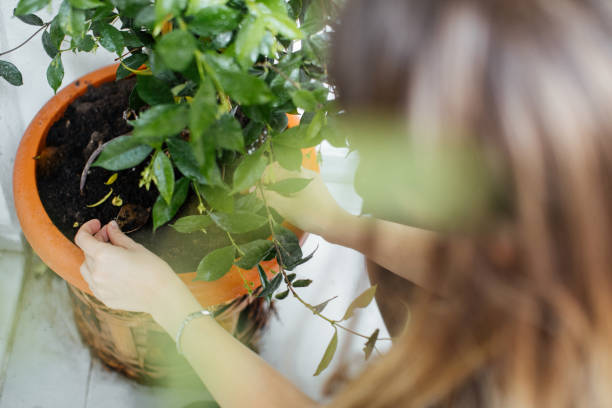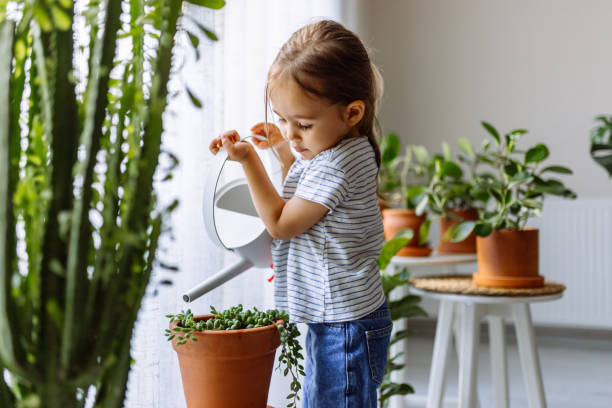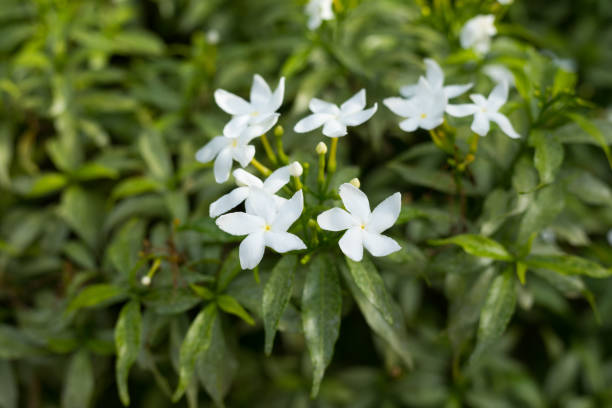How Often Should Jasmine Be Watered?
Jasmine is a flowering plant that needs water to grow and produce fragrant flowers. When it doesn’t receive enough water, the Jasmine will start to droop and may even die. Find out how often you should water your Jasmine plant. Keep reading!
In general, Water your Jasmine when it is necessarily needed. Simply, when the soil is dry. To determine, put your finger an inch into the soil and if it’s scorched, water the Jasmine. Most cultivars of Jasmine Jasmine require high humidity to bloom properly, so they need regular watering. It explains why it’s so popular in places like the southeastern United States and why some varieties have become so aggressive that they’ve become invasive in Florida and other states. If you’re growing indoors, you may want to keep your soil slightly more moist than you would if you were growing outdoors, as the evaporation of the water will aid in blooming – but don’t let it get too wet!

Table of Contents
How Much Water Do Jasmine Plants Need in the Heat of the summer?
Water your JasmineJasmine every two to three days during the summer months or whenever the top 1/2 inch of soil feels dry, depending on how hot it is outside. The best way to tell is to feel the soil. Poke your finger on the soil base into the soil at the bottom of the plant every couple of days to check if it feels dry. Some soils retain water better than others. So you’ll need to water less frequently with these soils than with others. You may only need to supplement on a few occasions if you have a rainy summer.
According to White Flower Farm, JasmineJasmine requires at least six hours of sunlight per day to flower properly, but plants that receive direct sunlight throughout the day may require more water. Watering your Jasmine should not be done on a set schedule because of all the variables involved.
How Often Should I Water During Winter?
Jasmine plants take a break during the colder months and begin to grow again in the spring months. Since they are not required to support blooming in the winter, they need less water. The moisture in the soil does not evaporate as quickly as it would otherwise. Watering will be much less frequent as a result. During rainy or wet winters, you may not need to water your outdoor Jasmine at all. Make one or two inspections a week of the soil to determine whether it requires additional water.

When to Water The Newly-Planted Jasmine?
After planting jasmine plants, water them right away. Water the plant every week or when the top inch of soil dries out until it is fully established. Dry or wet soil can make leaves turn yellow or brown. Between 10 and 15 feet tall, most jasmine plants spread out from 3 to 6 feet wide.
When it comes to water, jasmine plants require a lot, especially when they are in bloom. It is preferable to maintain a slight moisture level in the soil at all times. Weekly watering is advisable, but watering the plant should be done sooner rather than later if the ground becomes too dry before then.
How Often Should I Water Jasmine in Containers?
Plants grown in containers may require watering every week or even more frequently. Still, water should be applied when the soil is dry. In extremely hot or dry weather, increase the amount of water applied, but allow the soil to dry between waterings.
Can You Overwater Jasmine?
Jasmine will suffer from fungal overgrowth if it is overwatered. Overwatering causes the soil to become wetter than the plant’s root zone, which allows fungi to grow and attack the roots. In general, Jasmine prefers soil that is moist but well-draining. If you water it too frequently, the soil will become clogged, and the roots will become trapped in the water. In addition to causing root rot, this can also cause the plant’s growth to be stunted or prevent it from flowering altogether. It will eventually die if this condition is not corrected.
To prevent this from happening, make sure that your jasmine plants are adequately watered and that the soil does not get too wet.
What Happen When Jasmine is Underwatered?
Although Jasmine tolerates underwatering slightly better than overwatering, it can be equally hazardous not to provide enough water to the plant. When Jasmine is underwatered, the leaves will start to yellow and die. The flowers will also wilt and eventually fall off the plant. It will reduce the yield of jasmine tea and the quality of the tea.

What to Do if My Jasmine Starts to Droop?
If you notice that your JasmineJasmine is drooping or appears wilted, there are a few things you can do to help it get back on track:
1. Check the soil moisture level. If the soil is dry, add water gradually until the roots are wet. Don’t over-water; just enough to moisten the soil.
2. Check for any leaks in the irrigation system. Fix any leaks as soon as possible so that water is constantly reaching the jasmine plants.
3. Increase the watering frequency if there has been a recent rainfall or if it’s been sweltering and dry outside. Make sure to check the moisture level in the soil again after watering to ensure it wasn’t too much.
